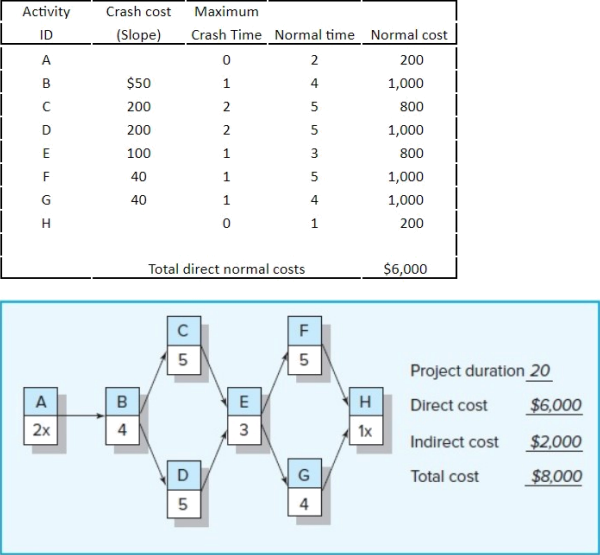CS/SCI 3377B Project Management

CS/SCI 3377B Project Management
Assignment # 2
Start Date: Feb 3 at 11:55 pm in the Owl assignment area
Due Date: Feb 28 at 11:55 pm in the Owl assignment area.
Question 1 value = 6; Question 2 value = 4;
Reference material from lecture 4 is generally what is required to properly complete this assignment.
Submit ONLY ONE file electronically as your submission for this assignment. The following file types will be evaluated as acceptable by our TA support: .pdf, .xls, .xlsx, .doc, .docx, .ppt, .pptx, .rtf; All other file types including .jpg and other picture files will not be evaluated and will receive a grade of zero.
Learning Outcome: This assignment reinforces with students the necessity of being very diligent when managing the time element of a project. More than simply influencing the team to “do better”, the project manager is empowered to set the project priorities, set the corresponding expectations, and then hold people accountable. Passive acceptance of the current realities of time on your project is not the right way to go about doing things. You need to be constantly aware of your risks and opportunities as they relate to time. Time is money. And, as we have said earlier, cost is king in project management. The following questions explore your understanding of how to ensure your project has the best opportunity to be delivered on time.
Question 1 - The Crash Point (6)
Use the information contained below to compress one time unit per move using the least cost method. Reduce the schedule until you reach the crash point of the network. For each move, identify which activity was crashed, the adjusted total cost, and explain your choice if you have to choose between activities that cost the same. Note: The crash point of the network is the point in which the duration cannot be reduced any further. Your class notes and examples should be sufficient. Consult pages 319 to 337 in Gray and Larson 8th Edition if further clarification is required.
Use the following information to compress one time unit per move using the least-cost method. Assume the total indirect cost is $2,000 and there is a savings of $100 per time unit reduced. Calculate the total direct, indirect, and project costs for each duration. What is the optimum cost-time schedule for the project? (Note: The correct normal project duration and total direct cost are provided.)
Question 2 – Understanding Project Time compression (4)
For each of the following short answer questions, limit your response to ¼ page per answer.
A. What are the 5 common reasons for crashing a project?
B. What are the advantages and disadvantages of reducing project scope to accelerate a project? What can be done to reduce the disadvantages?
C. Why is scheduling overtime a popular choice for getting projects back on schedule? What are the potential problems for relying on this option?
D. Identify 4 indirect costs you might find on a moderately complex project. Why are these costs classified as “indirect”?
E. How can a cost-duration graph be used by the project manager? Explain.
F. Reducing the project duration increases the risk of being late. Explain.
G. It is possible to shorten the critical path and save money. Explain how.
2021-02-26
